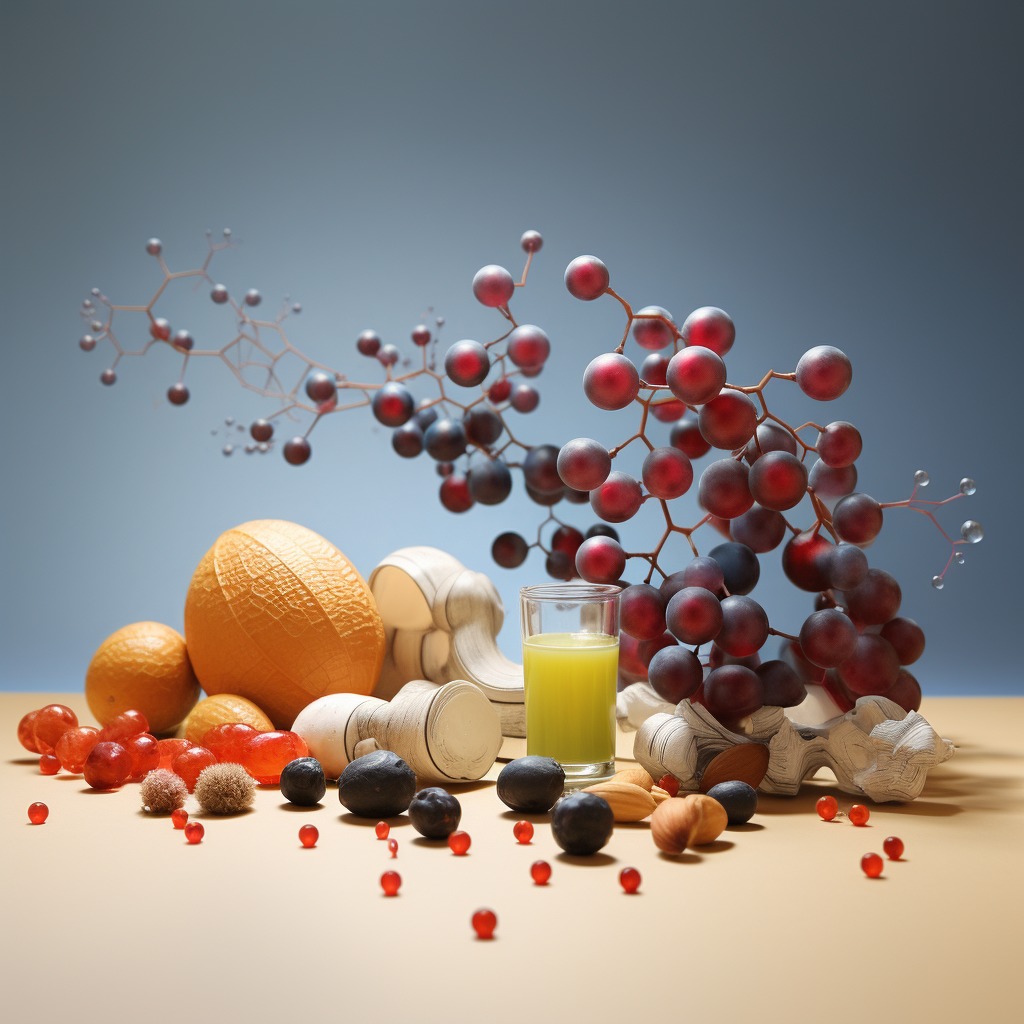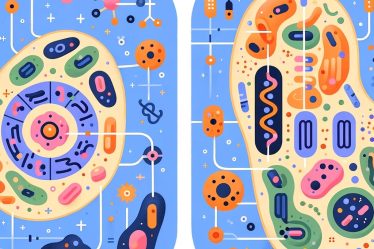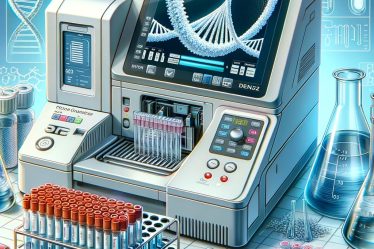
Welcome to the fascinating world of carbohydrates, the energy powerhouses that fuel essential processes in life. Carbohydrates come in many forms, from the simple sugars in your morning cereal to the complex polysaccharides that make up plant cell walls. They are a diverse group of molecules with a wide range of functions, serving as energy sources and playing critical roles in cellular structure and signaling pathways.
Discover your ideal chemistry tutor at meet’n’learn and skyrocket your understanding to new heights!
Our blog simplifies the world of carbohydrates by categorizing their types and explaining their functions. It’s valuable for students, teachers, tutors, and anyone interested in biochemistry.
Here’s a glimpse of what you’ll learn:
- Understanding Carbohydrates: The Basics
- Types of Carbohydrates: From Simple to Complex
- Chemical Properties and Reactions: The Science Behind Carbs
- Biological Significance: More Than Just Fuel
- Carbohydrates in Daily Life: Beyond Food
- Educational Importance: How Tutors Can Help
Introduction to the Science of Carbohydrates
Enter the fascinating world of carbohydrates, the often-overlooked molecules that fuel the biological realm. These versatile compounds are more than just a fast energy source in your diet. From the simple sugars that sweeten your coffee to the complex polysaccharides that make up plant cells, carbohydrates participate in various biological processes. They are essential to the structural integrity of cells, aid in signaling pathways, and even contribute to immune responses.
Want to expand your chemistry horizons? Our World of Chemistry offers a plethora of free educational blogs.
Need help with biology topics? Explore our extensive collection of biology educational blog posts designed to simplify complex concepts for you. Whether it’s photosynthesis, the intricacies of green algae, understanding bacteria and viruses, or delving into the fascinating world of genetics and cells, our resources have got you covered. Expand your knowledge and enhance your learning journey with us today.
Understanding Carbohydrates: The Basics
At their core, carbohydrates are organic compounds composed of carbon, hydrogen, and oxygen atoms. The general formula for carbohydrates is Cn(H2O)n, where n is a positive integer. This formula underscores that these molecules were initially considered “hydrates of carbon.”
Carbohydrates are categorized into three main types based on their structural complexity: monosaccharides, disaccharides, and polysaccharides. Monosaccharides are the simplest form and building blocks for more complex types. Disaccharides consist of two monosaccharide units, while polysaccharides are long chains of monosaccharides linked together.
One of the key features of carbohydrates is their isomerism. Isomers are molecules with the same molecular formula but different structural arrangements. In carbohydrates, this is often seen in the form of stereoisomers, particularly when discussing D and L configurations of sugars.
Carbohydrates play a crucial role in various biological processes. They are the primary source of energy in most organisms, stored in the form of glycogen in animals and starch in plants. They also have significant structural roles, as seen in cellulose in plant cell walls and chitin in the exoskeletons of arthropods.
Discover the chemistry behind Water and Photosynthesis.
Types of Carbohydrates: from Simple to Complex
Carbohydrates are a diverse group of organic compounds that can be broadly categorized into three main types: Monosaccharides, Disaccharides, and Polysaccharides. Understanding these categories is essential for grasping carbohydrates’ multifaceted roles in biological systems.
Monosaccharides: The Building Blocks of Carbohydrates
Monosaccharides are the simplest carbohydrates, consisting of single sugar molecules. Their general formula is CnH2nOn. The most common examples include glucose (C6H12O6) and fructose (C6H12O6). These simple sugars are the primary energy source for many organisms and are often found in fruits and other natural sources. They are often called ‘ simple sugars ‘ because they cannot be hydrolyzed into smaller carbohydrates.’
Disaccharides: Two Sugars are Better Than One
Disaccharides are formed when two monosaccharides are linked together through a glycosidic bond, resulting in a molecule with the formula C12H22O11. Notable examples include sucrose, a fusion of glucose and fructose, and lactose, a compound of glucose and galactose. These sugars are commonly found in foods like table sugar and milk. They are hydrolyzed into their monosaccharide components during digestion, providing a quick energy source.
Polysaccharides: Complexity in Structure and Function
Polysaccharides are complex carbohydrates with long chains of monosaccharides connected by glycosidic bonds. They serve various roles, from energy storage as starch in plants to providing structural integrity as cellulose in plant cell walls. The formula for starch is [C6H10O5]n, where n can be a large number, indicating the length of the chain. Cellulose has a similar formula but differs in the type of glycosidic linkage, making it indigestible for most animals.
Check out 8 Exciting Science Experiments for Kids and unravel The Greatest Discoveries in Biology.
Configuration: The D and L Forms
Carbohydrates can exist in different structural forms, known as isomers. The D and L configurations refer to the specific spatial arrangement of atoms around the chiral center, usually the asymmetric carbon atom farthest from the carbonyl group. These configurations are not just chemical curiosities but crucial for carbohydrates’ biological activity and functionality.
We have prepared a table comparing the structure, chemical formula, characteristics, and role of Monosaccharides, Disaccharides, and Polysaccharides in organisms.
| Characteristic | Monosaccharides | Disaccharides | Polysaccharides |
|---|---|---|---|
| Basic Structure | Single sugar unit | Two sugar units | Multiple sugar units |
| Examples | Glucose, Fructose | Sucrose, Lactose | Starch, Cellulose |
| Solubility in Water | Highly soluble | Moderately soluble | Low solubility |
| Role in Organisms | Immediate energy source | Short-term energy storage | Long-term energy storage, structural |
| Chemical Formula | C6H12O6 | C12H22O11 | (C6H10O5)n |
| Hydrolysis | Not applicable | Breaks into monosaccharides | Breaks into monosaccharides or disaccharides |
Introduction to the Periodic Table and Functional Groups in Organic Chemistry.
Chemical Properties and Reactions: The Intricate Chemistry of Carbohydrates
Carbohydrates are not just fuel for biological processes; they are also intriguing molecules when viewed through the lens of chemistry. Understanding their chemical properties and reactions is essential for grasping their biological roles and potential applications in various fields.
Hydrolysis and Dehydration Synthesis: The Yin and Yang of Carbohydrate Chemistry
At the core of carbohydrate chemistry are two fundamental reactions: hydrolysis and dehydration synthesis. Hydrolysis uses water to cleave complex carbohydrates into simpler sugars. This reaction is catalyzed by enzymes like amylase, which breaks down starch into glucose. Conversely, dehydration synthesis removes water to link simpler molecules into a more complex structure. This is how disaccharides like sucrose are formed from glucose and fructose. These reactions are not just textbook concepts but vital for metabolic processes like digestion and cellular respiration.
Glycosidic Bonds and Linkages: The Glue That Holds Carbohydrates Together
The individual sugar units in carbohydrates are connected by glycosidic bonds, which can be categorized as alpha (α) or beta (β) based on the orientation of the hydroxyl group involved. The type of glycosidic bond has a profound impact on the carbohydrate’s properties. For instance, cellulose’s rigidity is due to its β-glycosidic bonds, which create a stable, linear structure. In contrast, the α-glycosidic bonds in starch result in a helical structure, making it easier to hydrolyze and thus serving as a readily accessible energy source.
Isomerism: Same Formula, Different Characters
Isomerism in carbohydrates adds another layer of complexity. This phenomenon allows molecules with the same chemical formula to exist in different structural forms, each with unique properties. Known as isomerism, this can occur in various forms like structural isomers and stereoisomers. For example, glucose and fructose both have the formula \(C6H12O6\), but their different structural arrangements lead to distinct physical and chemical properties, such as sweetness and reactivity.
Discover how Hydrogen Bonds and Covalent Bonds are formed, and learn to Differentiate Them from Ionic Bonds.
Biological Significance of Carbohydrates
Carbohydrates are indispensable to life, serving as immediate and long-term energy sources and fulfilling structural and signaling roles. Let’s explore these functions.
Energy Storage and Supply
Carbohydrates are the go-to molecules for quick energy. In animals, glucose circulates in the blood and is an immediate energy source. Excess glucose is stored as glycogen in the liver and muscles for later use. Conversely, plants store energy through starch, which can be converted back to glucose. This dual role of carbohydrates as immediate and stored energy is crucial for the survival of both plants and animals.
Structural Roles in Cells and Organisms
Carbohydrates are not just energy molecules; they also provide structure. In plants, cellulose forms the backbone of cell walls, giving them rigidity and strength. In the animal kingdom, chitin is the key component of exoskeletons in arthropods like insects and crustaceans. These structural carbohydrates are not typically used for energy but are essential for maintaining the physical integrity of cells and organisms.
Signaling and Recognition Processes
Carbohydrates play a vital role in cell signaling and recognition. They are often found on the surface of cells, attached to proteins or lipids, and are involved in cell-to-cell communication and immune responses. Blood group antigens, for instance, are carbohydrate molecules. Their presence or absence on the surface of red blood cells determines an individual’s blood type, which is critical for blood transfusions.
Role in the Biosphere
Carbohydrates are central to the biosphere. Through photosynthesis, plants convert carbon dioxide from the atmosphere into carbohydrates, using light energy from the Sun. This releases oxygen into the atmosphere and transforms light energy into the chemical energy stored in carbohydrates. Animals then use this stored energy for various biological functions.
The basics of Polymers.
Carbohydrates in Daily Life: Beyond Food
Carbohydrates are not just confined to biology; they also broadly impact our daily lives. Carbohydrates are omnipresent, from the food we eat to the industries that sustain us.
-
Dietary Sources: Carbohydrates are essential in most diets, providing the energy needed for daily activities. Key sources include grains, fruits, and vegetables. Complex carbohydrates like whole grains and legumes offer more nutritional value and are digested more slowly.
-
Industrial Applications: Beyond the kitchen, carbohydrates have diverse uses. They are crucial in the production of biofuels and are raw materials in the textile industry. Cellulose from plants, for example, is used to manufacture fabrics and paper.
-
Medical Relevance: Carbohydrates are vital in medicine. Conditions like diabetes are directly related to carbohydrate metabolism. Lactose, a specific type of carbohydrate, can lead to lactose intolerance in those lacking the necessary enzyme for digestion.
Discover the fundamentals of Electrochemistry and Redox Reactions.
Educational Importance: The Role of Tutors
Understanding carbohydrates is crucial for scientists, healthcare professionals, and students. Here’s where tutors come into play.
How Tutors Can Simplify Complex Topics
Tutors can break down the complexities of carbohydrates into digestible pieces. They can explain the difference between monosaccharides, disaccharides, and polysaccharides, or elucidate the intricacies of glycosidic bonds and isomerism. Their targeted teaching methods make these topics more accessible.
The Importance of Interactive Learning Methods
Interactive learning methods, such as hands-on experiments and real-world applications, can make studying carbohydrates more engaging. Tutors often employ these methods to bring the subject to life, making it easier for students to grasp complex concepts and see their relevance.
Are you looking for a chemistry tutor? Enter “chemistry tutor Glasgow” or “chemistry teacher Sheffield” on your preferred tutoring platform, such as meet’n’learn, to find a teacher who can meet your specific needs.
If you thrive in group learning environments, search “chemistry classes London” or “chemistry lessons Manchester” online to discover local schools offering chemistry lessons.
How a tutor can help Make Science Fun.
Why Carbohydrates Matter: Final Thoughts
Carbohydrates are vital molecules that fulfill various critical roles in biological systems and daily life. Their functions range from supplying energy to providing structural support and contributing to intricate signaling pathways. We highly encourage further exploration of this captivating subject to gain a complete understanding of its importance. If you need any help, don’t hesitate to contact a tutor.
How to calculate Molar Mass, Mass Fraction, and Viscosity?
FAQs: Clarifying Common Questions About Carbohydrates
1. What Are the Primary Types of Carbohydrates?
Monosaccharides, disaccharides, and polysaccharides are the main types. Each has unique biological and industrial roles.
2. What Are the D and L Configurations in Carbohydrates?
The D and L configurations refer to the arrangement of atoms around the chiral center, affecting the molecule’s properties and biological activity.
3. What Are Glycosidic Bonds?
Glycosidic bonds are the links that connect monosaccharide units in disaccharides and polysaccharides, playing a key role in the structure and function of complex carbohydrates.
4. What Chemical Reactions Are Central to Carbohydrate Chemistry?
Hydrolysis and dehydration synthesis are key reactions that help form and break down complex carbohydrates.
5. How Do Carbohydrates Store Energy?
Carbohydrates are essential for both immediate and long-term energy storage. They exist in specialized forms like glycogen in animals and starch in plants.
6. What Is the Role of Carbohydrates in Daily Life?
Carbohydrates have a broad range of applications, from being dietary sources to their use in industrial applications like biofuels.
7. How Can Tutors Simplify the Complexity of Carbohydrates?
Tutors are instrumental in breaking down the intricate topics surrounding carbohydrates, making the subject more accessible for students and interested individuals.
Discover your ideal chemistry tutor at meet’n’learn and skyrocket your understanding to new heights!



